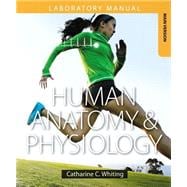NOTE: You are purchasing a standalone product; MasteringA&P® does not come packaged with this content. If you would like to purchase both the physical text and MasteringA&P search for 0133978559/9780133978551 Human Anatomy & Physiology Laboratory Manual: Making Connections, Main Version Plus MasteringA&P with eText -- Access Card Package, 1/e, which includes:
o 0133952479/ 9780133952476 Human Anatomy & Physiology Laboratory Manual: Making Connections, Main Version, 1/e
o 0134006577/ 9780134006574 MasteringA&P with Pearson eText -- ValuePack Access Card -- for Human Anatomy & Physiology Laboratory Manual: Making Connections, 1/e
MasteringA&P should only be purchased when required by an instructor.
Applying Anatomy & Physiology Concepts through Active Learning
Developed as the companion lab manual to Amerman’s Human Anatomy & Physiology, Catharine Whiting’s lab manual takes an active learning approach that uses a rich variety of hands-on activities, along with guided questions, to engage students and help them apply concepts learned in lecture to lab.
The active learning approach to Whiting’s Human Anatomy & Physiology Laboratory Manual: Making Connections includes unique hands-on activities that use different learning modes including labeling, sketching, touching, dissecting, observing, conducting experiments, interacting with groups, and making predictions. Whiting also includes pre-lab assignments to help students better prepare for lab; and post-lab assignments to solidify learning and challenge students to see interrelationships of concepts across topics.
Also available with MasteringA&P®
This title is also available with MasteringA&P -- an online homework, tutorial, and assessment system proven to help students learn. It helps instructors maximize lab time with customizable, easy-to-assign, automatically graded assessments that motivate students to learn outside of class and to arrive prepared for lab. The powerful gradebook provides unique insight into student and class performance.








